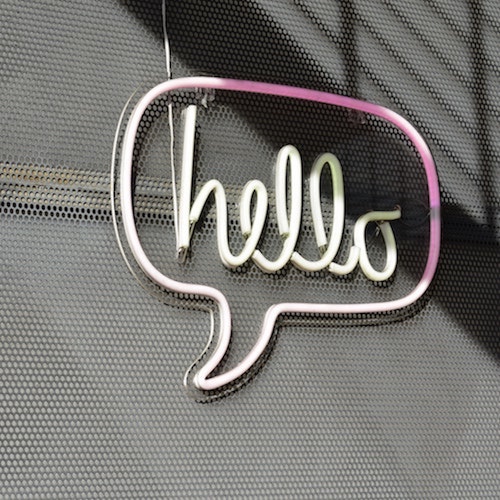
In this time of crisis, effective CRM will help brands forge stronger bonds with people without any product changing hands.
By Nick Beevors, Senior Strategist at Armadillo
You’re no doubt reading this from home, given that 55% of the UK population have been holed up for the past week (according to the latest figures from Savanta). We’ve changed and the brands we know and love (and those we don’t) have changed. They’re either closed for business, offering a very limited service or are so busy we can’t get hold of them.
The emails from company chief executives definitely had their place at the start of the coronavirus crisis, and they continue to appear in our in-boxes, but there are only so many empathetic well wishes (neutral background, long-form copy) you can send over the course of 12 weeks (at least). So, what next? Well, quite a bit, if brands are tuned into CRM’s shifting but pivotal role. Here are some important areas to consider.
Flip the funnel
We generally spend more time talking in practical terms with our clients, but the theory is important here. The awareness–action funnel, with broadcast channels at the top filtering down to direct-response channels at the bottom, has been flipped. People are still looking to TV and print but, with customer behaviour changing completely, these media don’t have their former roles and, likewise, cinema and outdoor can’t work in the same way.
Meanwhile, we know that email and online are where people are finding their news and information (internet use has doubled in the two weeks, according to Openreach data). Email, in particular, is a key channel, not only because it allows you to talk directly to customers but because you can be relevant and flexible right up until you send. The ultimate response to the pivots we keep hearing about. Those communications at the sharp end of the funnel are now much more vital as people read and digest information. There’s an opportunity to use CRM in broader ways.
Usually in CRM we talk about balancing lifetime brand loyalty with next-time brand loyalty, with the weight stacked in favour of the latter. We now need to reverse this, with either no or fewer occasions to trigger the next-time purchase. Every communication needs to create and build brand affinity.
What to say?
This shouldn’t be the time to scrabble around for content or look for hooks. The starting point should be the essence of the brand. What does it stand for? Establish what this means if the product is taken out of the equation. How can the brand deliver its message to the customer, over and above putting product in their hands or allowing them to experience it in the normal way? Be creative and ensure the answer is relevant to channel, brand, and customer. There’s a big opportunity here to do this right.
How to communicate and how often?
The power of our channels lies in personalisation and relevance. Generic welcome messages on apps and in email programmes should have been the first thing to change as they will most likely not work at the moment, and certain types of communications need to be mothballed completely. We’ve seen a general shift to weekly communications that resonate.
Also, think about the level of personalisation now – if you’ve built good brand affinity then keep everything human and personalised (and if you haven’t built a good brand affinity, should you even be emailing this audience in the first place?). Everyone’s craving human interaction in our new socially distanced world. When before have you even considered getting together with your old uni mates for a game of Quick Draw? Meanwhile, the official notices are still needed and need to be in news style and centred on hard facts.
Tangible examples
We’ve reviewed a lot of recent communications from our makeshift desks. The ones not working are the ones that carry on regardless, for example, the travel brand giving us ‘a bit of travel inspiration’. Not what we want or need to see at the moment.
The winners, meanwhile, are those doing things a bit differently. For example, in the same category, the brand sending older travellers a quiz or a puzzle to do. It might not be right for all but the company has adapted, its being more relevant to its customers and their new home-based lifestyle.
How is your business responding?
More than a million of us came out on to our doorsteps to applaud NHS workers. Burberry is making masks. Dyson is producing ventilators. This is all great news and brilliant to know. There’s extra visibility for these kind of initiatives at the moment. Think about your customers, your brand but also the wider world, which is increasingly relevant.
On the flipside, don’t make the mistake of navel gazing. I’ve seen communications from luxury brands asking their customers to buy vouchers to support them in the future. We all like paying it forward for a local business we love and have an affinity with, not so much for a multi-million-pound luxury retailer.
Build new routines
A change from “life as we know it” also give us the opportunity to build new routines. I used to be a hardened smoker and starting a new job was a good excuse to quit once and for all. CRM also has an important role to play in triggering these new routines.
Done right, companies have a part to play in the overall recovery and CRM during this time could actually help brands forge stronger, longer-term bonds with people, without any product changing hands.
This article first appeared in Campaign.
Nick Beevors is a Senior Strategist at Armadillo.
CRM. Unleashed.
You need to load content from reCAPTCHA to submit the form. Please note that doing so will share data with third-party providers.
More InformationNotifications